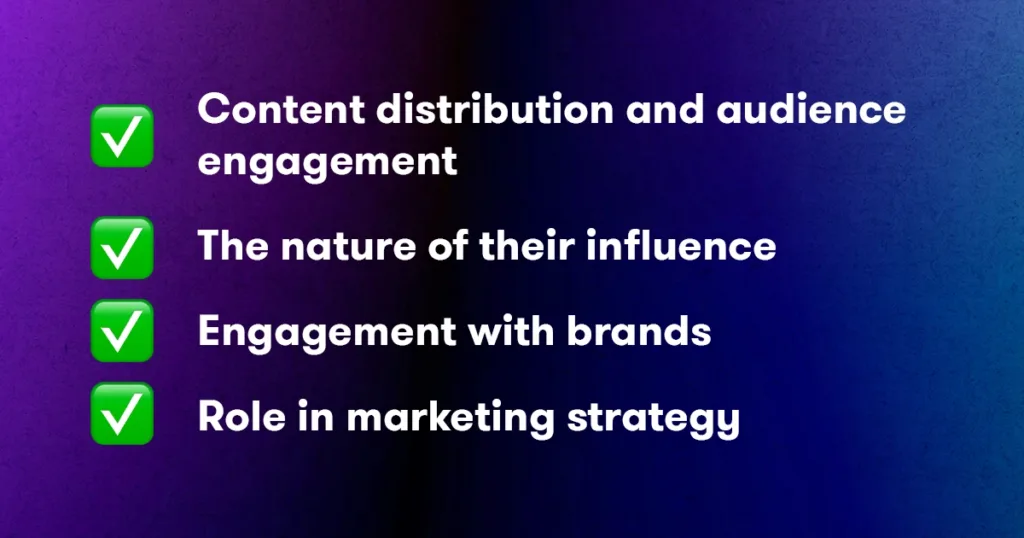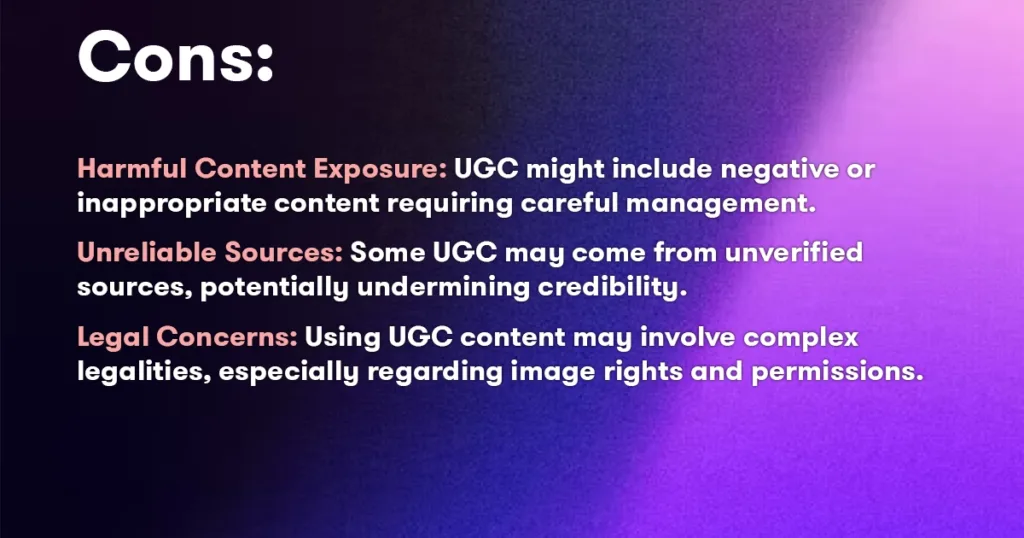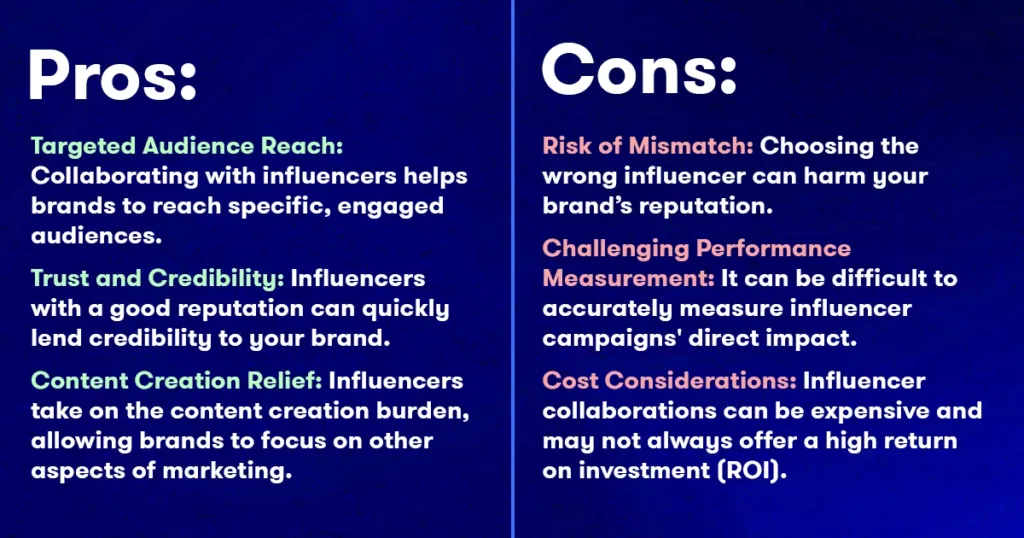UGC Creators vs Influencers: What’s the Difference?
After bouncing around tech start-ups and university literature programs, Joe has finally settled down as Billo’s Head of Content. Joe now spends his days writing ads about ads, teaching clients how to craft killer content, and combing through our web copy with a bold red Sharpie.
Nadzeya is a professional journalist, writer, and researcher. When she's not busy crafting compelling content, you can find her in a caffeine-induced brainstorming session, pondering life's most pressing questions, like, "Why do we press harder on the remote control when we know the batteries are weak?"

What’s the difference between UGC creators and influencers? This isn’t just an idle question but the key to unlocking a $21.1 billion industry. Here, the lines blur, merge, and redefine the very essence of digital marketing.
On platforms far and wide, we witness a dance of content creation: some are pure UGC creators, others are influencers, and some manage to be both.
What operational tactics does each group employ? How do they impact consumer behavior? What are the strategic implications for your brand?
In this article, we explore how these two forces are shaping the future of digital interaction and advertising in an era where every post means big business.
P.S. Check out our list of the top 5,000+ US UGC creators here.
4 Main Differences Between UGC Creators and Influencers

Both influencers and UGC creators shape brand narratives and engage audiences, but their approaches, methods, and impacts are entirely different. This section will explain how these two types of content creators differ.
1. Content distribution and audience engagement
- UGC Creators specialize in creating content that appears natural and relatable, as everyday users might post. They typically do not share their branded posts with their audience. Instead, brands use their content on their marketing channels. UGC creators are like the social media equivalent of commercial actors, producing appealing content that looks authentic.
- Influencers, on the other hand, are deeply connected to their audience. They share their content, including branded posts, directly on social media feeds and engage actively with their followers. Their role includes building relationships beyond mere marketing, making their content more personalized and influential.
2. The nature of their influence
- UGC Creators are hired for their ability to create visually appealing and compelling content that blends seamlessly with organic user-generated content. Their influence is subtle, as they are not typically tagged in promotional posts.
- Influencers sway their followers’ purchasing decisions due to their expertise, knowledge, or relationship with their audience. They are trendsetters and opinion leaders in their niches. In the case of KOLs, the expertise is based on actual professions they have.
3. Engagement with brands
- UGC Creators often work freelance and may also function as influencers. They are paid to produce specific content for brands, which is used across various marketing channels. UGC creators may not necessarily have rights to the content once it is handed over to the brand.
- Influencers engage in more comprehensive partnerships with brands. Their agreements often include creating and distributing content across their channels, like Instagram posts, TikToks, etc. The brand may be granted rights to reuse the content, but that isn’t always the case.
4. Role in marketing strategy
- UGC Creators are crucial for getting authentic and high-converting testimonials. Such content is key to strategies that make the brand seem relatable and genuine.
- Influencers are central to marketing strategies aiming to tap into new audiences, increase reach, and drive sales through trusted recommendations. Their influence is based on solid and trust-based relationships with their followers.
Summing up, UGC creators focus on creating content that brands use to appeal to customers in a more subtle, relatable manner. Influencers, with their connection and influence on their audience, are potent catalysts for brand promotion and audience engagement.
Which Should You Focus On?
In modern marketing, the decision between UGC creators and influencers can be huge. Сontent authenticity is becoming increasingly valuable, and the influence of social media personalities is evolving, so you must weigh the pros and cons of each approach. This decision will significantly impact your brand’s resonance with its target audience.
Pros and cons of UGC creators
| Pros: | Cons: |
| Cost-Effectiveness: UGC is generally less expensive and more manageable, especially for smaller or emerging brands. | Harmful Content Exposure: UGC might include negative or inappropriate content requiring careful management. |
| Brand Loyalty Enhancement: As consumers create UGC, it fosters a genuine connection and loyalty to the brand. | Unreliable Sources: Some UGC may come from unverified sources, potentially undermining credibility. |
| Social Proof: Customer-generated content on social platforms serves as powerful social proof, enhancing credibility. | Legal Concerns: Using UGC content may involve complex legalities, especially regarding image rights and permissions. |
| SEO Improvement: UGC can boost SEO through increased dwell time, keyword-rich content, and higher search rankings. | |
| Builds Trust: Featuring real consumer experiences enhances authenticity and trustworthiness. |


Pros and cons of influencers
| Pros: | Cons: |
| Targeted Audience Reach: Collaborating with influencers helps brands to reach specific, engaged audiences. | Risk of Mismatch: Choosing the wrong influencer can harm your brand’s reputation. |
| Trust and Credibility: Influencers with a good reputation can quickly lend credibility to your brand. | Challenging Performance Measurement: It can be difficult to accurately measure influencer campaigns’ direct impact. |
| Content Creation Relief: Influencers take on the content creation burden, allowing brands to focus on other aspects of marketing. | Cost Considerations: Influencer collaborations can be expensive and may not always offer a high return on investment (ROI). |

For example, high-profile celebrities like Taylor Swift charge about $1.6 million for each social media post, while Dwayne Johnson, also known as ‘The Rock,’ makes about $2 million. Even micro-influencers can make hundreds or thousands of dollars a post.
UGC or influencer marketing?
Whether to focus on UGC creators or influencers depends mainly on your brand’s goals and resources. UGC offers authenticity and cost-effectiveness, while influencers can provide targeted reach and establish trust. Sometimes, a blended approach may be the most effective, combining UGC best practices and influencer marketing to create a comprehensive, effective campaign.
UGC Creator Examples
UGC creators are reshaping the landscape of digital marketing by offering authentic and engaging content. Platforms like Billo and social media sites like Instagram and TikTok have become fertile grounds for these creative talents. Let’s look at some UGC creators showcasing their unique styles and content.
Monica Lynne (@its.monicalynne)
Monica Lynne is a digital and business mentor with a strong presence in the UGC community. Hailing from Costa Rica and currently residing in North Carolina, Monica brings a diverse perspective to her content creation. Unlike many creators specializing in specific niches, Monica prides herself on her versatility. She creates content for a wide range of products and services, both physical and digital.
Her TikTok account also serves as an educational platform for other creators. Monica offers valuable insights into TikTok creator tips, covering aspects such as monetization strategies, technical advice, and the latest trends in the UGC creator industry. Her approach makes her an invaluable resource for aspiring and established creators alike.
Ryan Santoyo (@oneoffryan)
Ryan Santoyo is a UGC creator who understands the importance of connecting with both creators and brands. UGC is booming right now, and he encourages digital creators to take advantage of it. Santoyo is particularly interested in DTC (direct-to-consumer) brands, distinguishing himself from creators who focus on retailers.
In addition to creating content, Ryan offers valuable guidance for brand content creation. He also runs a ‘Creator Academy’ course, an excellent resource for individuals who enjoy content creation but are not fully versed in UGC nuances. His practice is particularly beneficial for those looking to transition into UGC creation. It gives them the necessary skills and knowledge to thrive in this field.
Madeleine Andrén (@madeleineandren)
Madeleine Andrén is a model and UGC creator based in Bali, originally from Sweden. Her content, primarily shared on Instagram, captures her lifestyle, wellness, and fashion experiences. Madeleine has a distinct aesthetic that resonates with brands, making her a sought-after creator for collaborations in these niches.
Interestingly, Madeleine does not maintain an online portfolio beyond her social media accounts (Instagram and TikTok). However, her impact and reach remain the same. She has a website with a simple yet effective contact option, making it easy for brands to reach out to her for potential collaborations.
Billo UGC Creators
UGC creators are storytellers, trendsetters, and pioneers in a world increasingly shaped by authentic, user-driven narratives. Nowadays, connecting brands and customers requires the human creativity that they possess.
At Billo, we understand the diverse needs of brands and offer a wide range of UGC creators to suit any requirement. Whether you’re looking for creators with specific characteristics like tattoos or unique demographics or want to explore different content styles, Billo’s creators’ pool has something for everyone.
Billo’s Key Benefits
- Experiment and test: Find the best ad creatives by experimenting with different types of user-generated content.
- Affordable and direct: Connect directly with thousands of vetted video creators and editors working from home studios across the United States, eliminating go-betweens and reducing costs.
- A diverse range of creators: Choose from over 5,000 U.S.-based UGC creators to find creatives your audience can identify with. Billo offers a hassle-free process to produce your videos per your vision.
- In-house editing for professional quality: In-house editors ensure that your ads are polished and look professional in no time.
- AI Storyboard Writer: Save time and effort with AI Storyboard Writer, helping you create more UGC quickly.
Billo offers a 30-day money-back guarantee, allowing you to try our services risk-free and ensure you find the right video creator for your product.
Influencer Examples
The influencer landscape is incredibly diverse, spanning various categories and audience sizes. There’s also a vast spectrum, from micro-influencers with a dedicated but smaller following to mega-influencers with millions of followers, like Kim Kardashian or Cristiano Ronaldo.
Now, let’s focus on some exceptional mid-tier influencers with a follower count between 50K and 200K, offering both accessibility and broad reach.
Bailey Drew (@heybaileydrew)
Bailey Drew is a travel enthusiast who brings her over 50.5K followers on a global journey. Her content combines travel experiences, self-growth, and life as a dog mom. She’s known for engaging travel vlogs showcasing the best spots to visit and stay worldwide.
Sofi Manko (@fit.bysofi)
With over 231K followers, Sofi Manko is a social media beacon of fitness and wellness. She is dedicated to helping her audience craft their best selves through mindful workouts and healthy lifestyle content, including nutritional insights and fitness vlogs.
Dave Patera (@dinnerswithdave_)
Dave Patera, a chef and recipe developer, captivates over 194K followers with his culinary exploits. His Instagram is filled with creative cooking vlogs and tutorials, reflecting his love for good food and cooking products, especially from the Maghreb region.
Laiza Hill (@laizahill)
Laiza Hill, a TikTok travel influencer, guides her 133.7K followers through exciting travel destinations, theme parks, and culinary spots. Her content includes reviews and tips on the best places to stay, making her a valuable resource for travel enthusiasts.
Emily Stone (@emily_stonee)
Emily Stone is an RN and fashion enthusiast on TikTok, sharing her dual passions with over 55.8K followers. Based in Wisconsin, Emily offers insights into her nursing profession while sharing her love for affordable and stylish fashion.
Nicole Vasquez (@nicolevas1)
Nicole Vasquez, a TikTok influencer with over 66.6K followers, is all about trendy and modern fashion. Her “30 days of fits” series displays her daily fashion choices, resonating with followers seeking contemporary style inspiration.
The Bottom Line
Your brand’s goals and needs determine whether you should use UGC creators or influencers. UGC creators offer authenticity and relatability, making them ideal for brands seeking to build trust and engage with their audience. Their content is more affordable and flexible, suitable for various platforms and marketing strategies.
Influencers bring established followings and broader reach and visibility. They are effective for brands looking to tap into specific niches or leverage influencer credibility and influence to drive brand awareness and sales.
The decision is not about choosing one over the other but understanding how each complements your marketing strategy. With a balanced approach, you can create a more dynamic, practical, and comprehensive marketing campaign that incorporates both UGC creators and influencers.
Sources
Geyser, W. (2023, October 30). The State of Influencer Marketing 2023: Benchmark Report. Influencer Marketing Hub. https://influencermarketinghub.com/influencer-marketing-benchmark-report/
Continue learning:
Head of Content
After bouncing around tech start-ups and university literature programs, Joe has finally settled down as Billo’s Head of Content. Joe now spends his days writing ads about ads, teaching clients how to craft killer content, and combing through our web copy with a bold red Sharpie.

Authentic creator videos, powered by real performance data
22,000+ brands use Billo to turn UGC into high-ROAS video ads.
From Avatars to Authenticity: Navigating the 2025 Wave of AI Generated UGC
That UGC ad you just watched? The person might not [...]...
Read full articleMastering UGC Scripts: Best Practices, Templates & Creator Insight
In 2025, brands are facing the most competitive short-form video [...]...
Read full articleFrom Hashtags to Sales: UGC Campaign Examples That Worked
User-generated content (UGC) campaigns are reshaping how brands build trust and [...]...
Read full article



